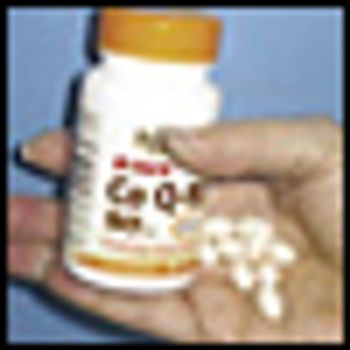
Patients with advanced progressive cancer require care plans that address their physical, emotional, and psychosocial needs, as well as their goals of care.

Your AI-Trained Oncology Knowledge Connection!


Patients with advanced progressive cancer require care plans that address their physical, emotional, and psychosocial needs, as well as their goals of care.

In this article, prognostic data are summarized and a suggested approach for discussing hospice enrollment with patients is presented.

CancerNetwork presents exclusive coverage from the annual San Antonio Breast Cancer Symposium. As part of our preconference coverage, we present an interview with Dr. Kent Osborne, director of the Lester and Sue Smith Breast Cancer Center and the Dan L. Duncan Cancer Center at the Baylor College of Medicine, where he is also a professor of medicine in cellular and structural biology. Dr. Osborne is the moderator of the year in review session and he has been involved with the meeting since its beginning.Check back here for news and updates to come.

The article by Aneja, Gross, Soulos, and Yu outlines applications of geographical information systems (GIS) software to oncology research.

Flax, an annual plant believed to have originated in Egypt, is cultivated around internationally and is among the world’s oldest crops.

This review describes the development and technical capabilities of GIS, potential applications of Geographical Informational Systems in cancer research, and the limitations of such work.

This article summarizes some of the most important federal coverage provisions and safeguards that promote access to preventive services for individuals with cancer or individuals who are at risk for cancer

The goal of this supplement is to present a comprehensive overview of the major current and emerging treatment options for patients with relapsed and/or refractory multiple myeloma.

Oncologist Compensation 2011Is your compensation keeping pace with that of your fellow oncologists? We surveyed practicing oncologists all across the country about their compensation and overall health of their practices. See what they said, then join the conversation about how your practice is different. View results from the 2011 Compensation Survey in our slideshow.

The goal of this supplement is to present a comprehensive overview of the major current and emerging treatment options for patients with relapsed and/or refractory multiple myeloma, with particular focus on proteasome inhibitors and immunomodulatory drugs, along with other emerging agents (eg, histone deacetylase inhibitors, heat shock protein inhibitors, and monoclonal antibodies). As the treatment landscape has evolved, it has become readily apparent that the available therapies have different tolerability profiles depending on patient and disease characteristics.

The Future of Treatment for Patients With Relapsed/Refractory Multiple MyelomaThe supplement and associated publication costs were funded by Onyx Pharmaceuticals

A study has been released that demonstrates the cost-effectiveness of Medicare-funded cancer care treatment programs.

Find out how your compensation, bonuses, and benefits compare to your peers. Data exclusive to CancerNetwork.

Conference Calendar for Fall 2011 - Spring 2012

Counseling women at high risk for ovarian and uterine cancer is a complex process, from genetic diagnosisto the management of at-risk women. Rimes andcolleagues have presented these challenging issues, andsuggested ways to manage them, very well.

Coenzyme Q10, or CoQ10, is a naturally occurring, lipid-soluble antioxidant and an essential electron carrier involved in the mitochondrial respiratory chain. In mitochondria, CoQ10 functions as a coenzyme that assists in the oxidative phosphorylation of nutrients, leading to production of cellular adenosine triphosphate (ATP), or energy.

During the 1970s and 80s, several researchers in Canada and in the United States, including those at the National Cancer Institute, studied Essiac. All failed to find any evidence of effectiveness.

Women with high-grade serous ovarian cancer who also harbor a BRCA2, but not a BRCA1 mutation tend to have a better chemotherapy response and overall survival compared with those patients who are BRCA wild type.

Based on a review of prostate cancer treatment and screening trials, the U.S. Preventive Services Task Force (USPSTF) has stated that prostate-specific antigen (PSA)–based screening may not be necessary, saying that the potential benefits of the screening do not outweigh the potential harm of complications from evaluations and treatments.

I believe cancer doctors have a duty to be accessible to patients as much as possible. Taking treatment for cancer is to say the least an intense experience, sometimes an ordeal, and oncologists must be diligent in keeping everyone up to date on test results, logistics, complications, on good news as well as bad.

A recent epidemiology study by the NCI has found an almost four-fold increase of cancer survivors since 1971: 11.9 million in 2008 compared with 3 million in 1971, and the authors of the study expect a 42% increase in the number of older adult survivors in the next 10 years.

In an online-first article in Nature Chemical Biology (DOI: 10.1038/nchembio.695), Sebastian Nijman of the CeMM–Research Center for Molecular Medicine of the Austrian Academy of Sciences in Vienna and his colleagues describe the development of a chemical genetic approach that has identified mechanisms that can lead to resistance to PI3K inhibitors used as cancer treatments.

This review describes the clinical features that should suggest a search for systemic malignancy as the cause of unexpected microangiopathic hemolytic anemia and thrombocytopenia.


Hematology Letters is a new blog for Cancer Network written by Mojtaba Akhtari, MD of the University of Nebraska Medical Center, Omaha, Nebraska.

Collaborating scientists at the Department of Biological Engineering at MIT and the Center for Systems Biology at Harvard University have created an engineered biological system that senses and integrates multiple inputs and can precisely regulate the biology of a living cell. This type of approach could be useful to engineer anti-cancer therapies that are able to distinguish a cancer from a non-cancer cell, inducing apoptosis in the cancerous cells.

The American Society of Clinical Oncology (ASCO) Quality Oncology Practice Initiative (QOPI®) is a voluntary program designed to assess and improve processes of care in oncology practices.

The diagnosis and therapy of thrombotic thrombocytopenic purpura (TTP) have advanced dramatically in the past 25 years, with increasing diagnostic awareness spurred on by the discovery of plasma exchange as an effective therapy.

Ginkgo biloba, one of the oldest living tree species, is cultivated worldwide for its medicinal properties and aesthetic appeal. The leaves and seeds are used in traditional medicine to treat respiratory diseases, circulatory disorders, sexual dysfunction, and loss of hearing.

The article by Dr. George is of great use to the practicing clinician, not only in the hematology-oncology setting but also in general practice or emergency medicine.